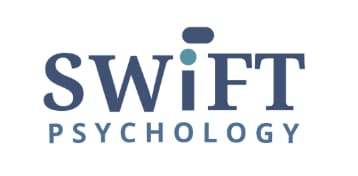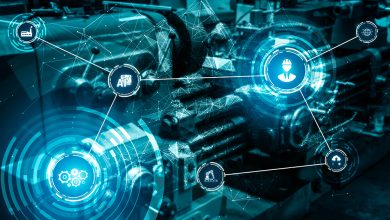
In the fast-moving landscape of manufacturing, the emergence of agentic systems is reshaping how factories operate. These AI-driven systems are not just a technological upgrade, they represent a paradigm shift that combines automation, artificial intelligence, and human ingenuity to create smarter, more adaptive, and efficient production environments.
What Is Agentic Manufacturing?
To understand agentic manufacturing, it’s helpful to differentiate it from traditional automation and AI systems:
- Automation is about machines executing predefined tasks. While it excels in stable conditions, it lacks the ability to adapt to change.
- AI adds a layer of intelligence, enabling systems to analyze and surface data for analysis. However, they do not interact with other systems or affect changes.
- Agentic Systems make decisions, coordinate actions across the factory, and learn from outcomes to improve over time. These systems not only sense and think but also can act autonomously or semi-autonomously (where human supervision is necessary)
In essence, agentic manufacturing is like having digital managers and operators that handle routine decisions 24/7. These systems operate under high-level goals set by humans but figure out the “how” autonomously, creating a self-optimizing, semi-autonomous factory.
Why Manufacturing Needs to Evolve
The manufacturing industry is under immense pressure to adapt to a rapidly changing world. Supply chain disruptions, rising costs, workforce shortages, and a push to onshore manufacturing are pushing traditional factories to move beyond static efficiency models. The stakes are high: Global manufacturing faces a workforce gap and it is estimated that, by 2033, the industry will need to fill 3.8 million jobs, with 2.1 million projected to remain unfilled. At the same time, there is tremendous economic opportunity with smart factories expected to generate over $1.5 trillion in annual value by 2030.
Challenges extend beyond traditional manufacturers. A new wave of hardware companies, such as SpaceX, Joby Aviation, Astranis, and Machina Labs, are developing nimble manufacturing processes that enable rapid changes to highly complex products. Yet, the intense competition and timelines in critical manufacturing industriesdemand that they continually refine and innovate these processes to stay viable in today’s economy.
While the starting point and the challenges might be different, both types of manufacturers can be aided by Agentic manufacturing—providing real-time adaptability, continuous optimization, and enhanced decision-making capabilities.
How Agentic Manufacturing Systems Work
Agentic systems integrate three key components: perception, cognition, and action. Here’s how they function in a manufacturing setting:
- Perception: Sensors, such as IoT devices and vision cameras, gather real-time data on machine performance, inventory levels, and environmental conditions.
- Cognition: AI algorithms analyze this data, detect patterns or anomalies, and determine the best course of action.
- Action: The system autonomously adjusts machine settings, reroutes tasks, orders materials, or intervenes in other ways to achieve its goals.
For example, if a machine begins to show signs of wear, an agentic system can predict potential failure, schedule maintenance, and reroute production to minimize downtime.
The Benefits of Agentic Manufacturing
Agentic systems unlock a range of benefits that go far beyond incremental efficiency improvements:
1. Enhanced Productivity
Agentic systems enable dynamic scheduling, real-time adjustments, and predictive maintenance. A Deloitte survey found that smart manufacturing technologies can improve production output by up to 20% and employee productivity by 20%. As just one example, Boeing reduced production lead times by 25% through AI-driven design optimization and automated assembly processes.
2. Reduced Downtime
Predictive maintenance powered by AI can reduce unplanned downtime by 30–50%. For example, the same Deloitte study reported a 70% reduction in equipment breakdowns for companies adopting predictive maintenance algorithms.
3. Improved Quality
Agentic systems enforce quality standards in real time, catching defects before they escalate. In one case, AI vision systems enabled zero-defect deliveries, significantly reducing rework and warranty costs.
4. Sustainability Gains
By optimizing energy usage and reducing waste, agentic systems contribute to sustainability goals. For example a packaging machinery company doubled its output efficiency and cut energy usage by 40% using agentic control.
Reimagining the Role of Humans
One of the most exciting aspects of agentic manufacturing is how it redefines the role of human workers. These systems don’t replace people—they amplify their capabilities. Operators can shift from manual tasks to strategic supervision and innovation and technicians receive real-time support and guided workflows, improving job satisfaction. By handling repetitive tasks, agentic systems free up workers to focus on higher-value activities, fostering a more engaged and empowered workforce. We foresee a whole new category of jobs emerging in manufacturing such as AI Workflow Orchestrators and Manufacturing Data Specialists as agentic technologies are adopted.
Real-World Applications of Agentic Manufacturing
As agentic systems mature, their adoption is expected to accelerate. Gartner predicts that by 2025, 70% of organizations will implement goal-driven AI to manage core operations. Industries like aerospace, clean energy, and medical devices are likely to lead the way, given their need for precision, adaptability, and compliance. Here are just a few examples of where we are seeing the technology being used today:
- Aerospace: SpaceX is frequently cited for its aggressive in-house manufacturing and automation, reportedly using custom software and simulation (a digital thread) to iterate rocket designs extremely fast, and their factories include AI-monitored welding and inspection systems.
- Semiconductors: Intel achieved a 30% increase in factory output by leveraging AI for process optimization and defect detection.
- Automotive: Tesla has begun using agent-like systems in its Gigafactories to optimize production flow and detect inefficiencies across lines in real time.
- Packaging: A packaging manufacturer used agentic systems to respond to material shortages in under five minutes, avoiding downtime.
These examples demonstrate the tangible benefits of agentic manufacturing, from cost savings to faster delivery and improved customer satisfaction.
The Future of Agentic Manufacturing
The smartest factories of the future won’t just be fast or efficient—they’ll be “awake.” They’ll sense, respond, and evolve in real time, creating a new standard for operational excellence
Agentic manufacturing represents a powerful strategy for navigating the complexities of modern industry. By combining the efficiency of automation with the adaptability of intelligence, these systems create production environments that are not only smarter but also more resilient and sustainable.
For manufacturing leaders, the question is no longer “Can we afford to modernize?” but “Can we afford not to?” The factories that embrace agentic systems today will be the ones shaping the future of industry tomorrow.
Karan Talati is the CEO and co-founder of First Resonance. First Resonance has pioneered the ION Factory OS for the aerospace, automotive, and robotics industries and now powers over 50 leading manufacturers. These companies are leaders in cutting-edge products like eVTOLs (air taxis), rockets, electric boats, and nuclear reactors. First Resonance is a group of the world’s best engineers from companies like SpaceX, Boeing, and Apple. Manufacturers who build with ION save countless hours and dollars with their innovative, flexible, and AI-driven approach to modern manufacturing.




